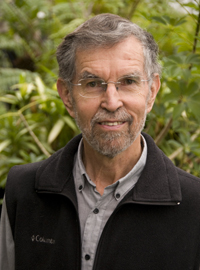
Past President, Sharon Seibt, wrote the following “review” of the event:
What I Learned at Night School
In my twelve years in PROBUS, I have learned so much about the world and its people just by belonging to, and participating in this club. Thursday evening, April 30th, was a perfect example.
Although the Deep Bay Marine facility is less than an hour away, I had never been there, nor really knew what it was about.
Signing up for dinner and a lecture as another Out and About excursion seemed simple and anything about our ocean would surely be interesting. Little did I know that it would include a delicious buffet (salmon, roast beef and all the trimmings and dessert) as well as a “movie” playing on the big screen as we visited with people around us.
Actually a projection of live plankton (trawled from the sea earlier that afternoon) under a specialized microscope, it was fascinating to watch a variety of wild shapes – some kind of familiar and some just weird – moving slowly or darting madly off in all directions.
Then the lecture started and it was a whole new world, an undersea food chain that started with one celled plankton and went all the way up to big mammals – bears and people.
The oceanographer, Dr. Paul Harrison, told us that in the space-crazed age of the 60s he had chosen the unknown of the ocean rather than the similarly unknown of outer space. His decision is understandable considering the rich diversity of the world on our doorstep.
Focusing on plankton and the conditions and timing for nutrients that are necessary for plankton to grow, he revealed so many interesting facts.
Did you know that plankton
- live only one year
- can be seen from outer space
- can be plants, the grass of the sea, called Phytoplankton
- need light as well as nutrients
- are fed by spring run off and agitation of winds
- have amazing, unbelievably weird shapes
- feed other plankton that are animals, Zooplankton
Zooplankton:
- can reproduce by division and by sex
- also feed some fish directly (sardines, herring, young salmon)
- can swim up to a meter per hour
- can be transparent to avoid becoming prey
- migrate down in daylight, up at night
- have antennae and nets to capture food
- produce the rich oil which accumulates in fish
- made the off-shore oil deposits bazillions of years ago
Bacteria-plankton:
- live on the ocean floor,
- break down the dead plankton (and others),
- release the organic matter back in the sea
Harrison also told us about the unique and wonderful features that make the Strait of Georgia so productive, as well as the stressors on this production.
If you want to know more, check out The Sea Among Us, edited by Richard Beamish and Gordon McFarlane. It has all this explained in detail in a chapter by Harrison, plus the geology, physiology, mammals, fish, and birds of the Strait, along with the history of people and industry!
On behalf of the 40 people from Probus, I would like to thank Judy Love-Eastham for arranging this outing. It was a winner!
Sharon
P.S. This was the last lecture in the series, but check out the website as there are also some concerts and other activities over the summer.
